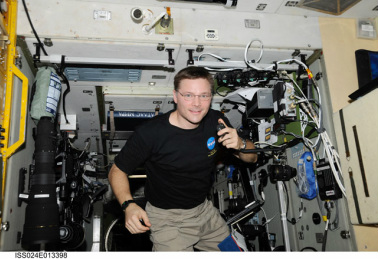Video Source
AMSAT
Use this video as a key resource to learn and practice the Morse Code. This video provides a key Morse code practice tool. The letters of the alphabet appear on the screen alongside the Morse code sounds for each letter of the alphabet, enabling anyone to associate the sound of the Morse code character with the letter very easily. Each letter of the alphabet is repeated three times to reinforce the sound of the Morse code with the letter. The aim of the Morse code practice video is to help the viewer to associate the sound and rhythm of the Morse character with the actual letter. Once the Morse sound for a letter becomes associated with the written letter, it is possible to increase the speed at which Morse code communications can be read. Morse code is still used in some areas of radio communications including amateur radio or ham radio where it provides an effective form of communication. It can enable two way radio communications contacts to be maintained when many other forms of transmission might not. Although many high power ham radio stations still use Morse code, it particularly comes into its own for amateur radio stations using home built low power radio communications equipment. The equipment for Morse code is very much simpler than that required for other modes and this means that many stations build their own. So even though it may be thought of as an old form of radio communications, Morse code is still well worth learning and it can bring hours of pleasure.
You never know when you might receive some signals, might come in handy when Extraterrestrials are hailing us. Which I think that they are through C6 Contact. Using Ham Radios on the 144 MHz.
Almost any 144 MHz FM rig will receive the ISS, you can even use a general coverage VHF scanner with an external antenna. As far as the antenna is concerned the simpler the better. A ¼ wave ground plane has a high angle of radiation and works well. Large 144 MHz colinears are not as good because the radiation pattern is concentrated at the horizon while the ISS is above 15 degrees elevation for most of a pass.
You can receive the ISS outdoors using a 144 MHz hand-held with its helical antenna but a 1/4 wave whip will give far better results.
Some ISS crew members make random, unscheduled, amateur radio voice contacts with earth-bound radio amateurs, often called “hams”. They can make radio contacts during their breaks, pre-sleep time and before and after mealtime. Astronauts have contacted thousands of hams around the world. The work schedules of the ISS crew dictate when they are able to operate the radios. The crew’s usual waking period is 0730 – 1930 UTC. The most common times to find a crew member making casual periods are about one hour after waking and before sleeping, when they have personal time. They’re usually free most of the weekend, as well.
Visit the the “Beginners” sections of the AMSAT-NA or AMSAT-UK websites for information on getting started with all modes of amateur radio satellite operation.
Please remember we all have different opinions, Think Before You Speak or Write Something that is cruel to Others. After all, We are only Humans. Wishing you clear skies and wide eyes. To share your experiences or just leave a comment there is a area below. Read or listen.
We are the change the world has been waiting for!
Have you witnessed an unidentified flying object?
Whether you think UFOs are black projects, extraterrestrial craft, something else altogether, or just don’t know.
Unconditional love. The road we all get to walk. Unconditional love is like the sun.
WE ARE THE DISCLOSURE ~ WE HAVE NEVER BEEN ALONE
Love and Regards,
Thank You,
Nancy Thames




